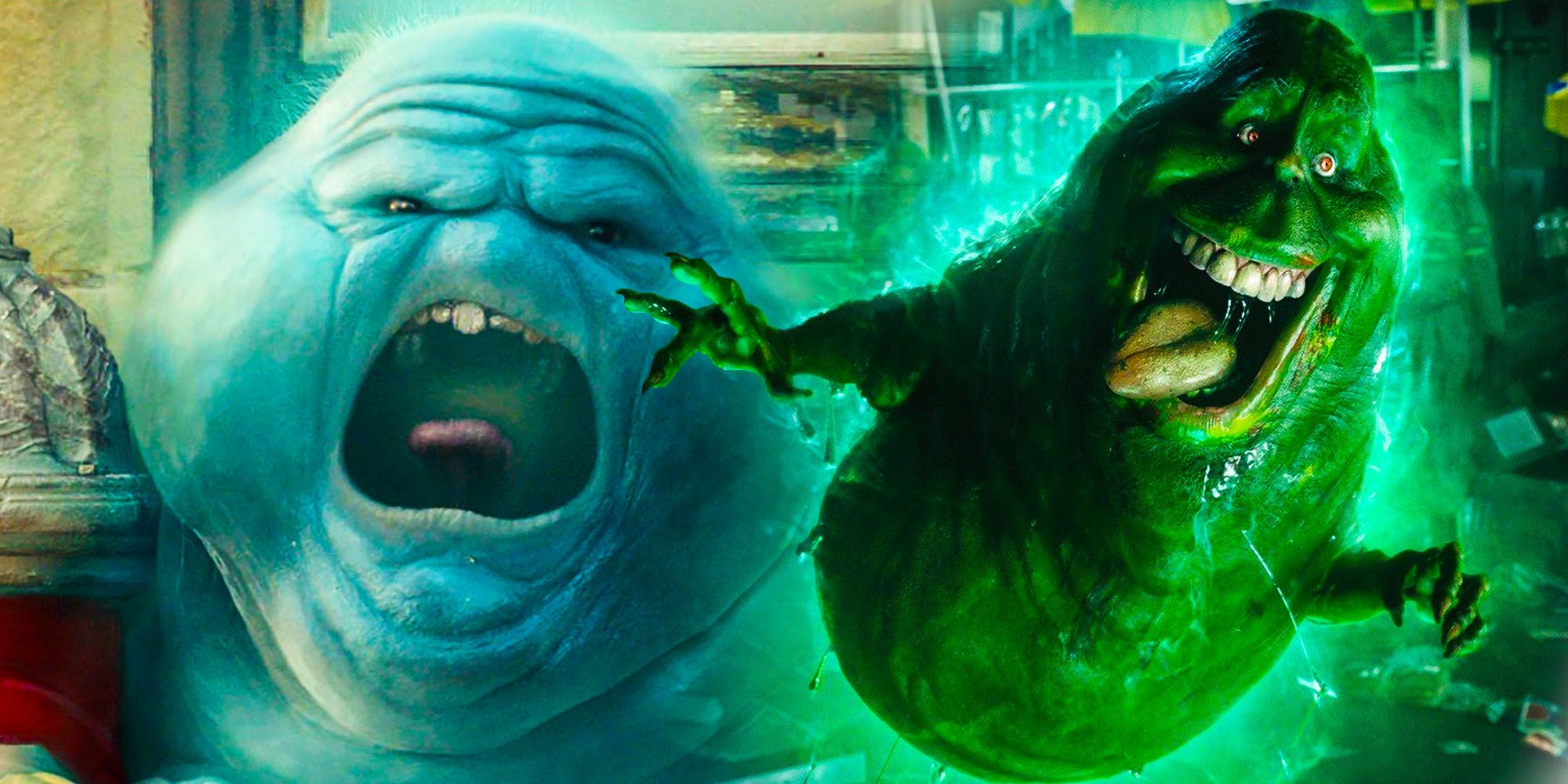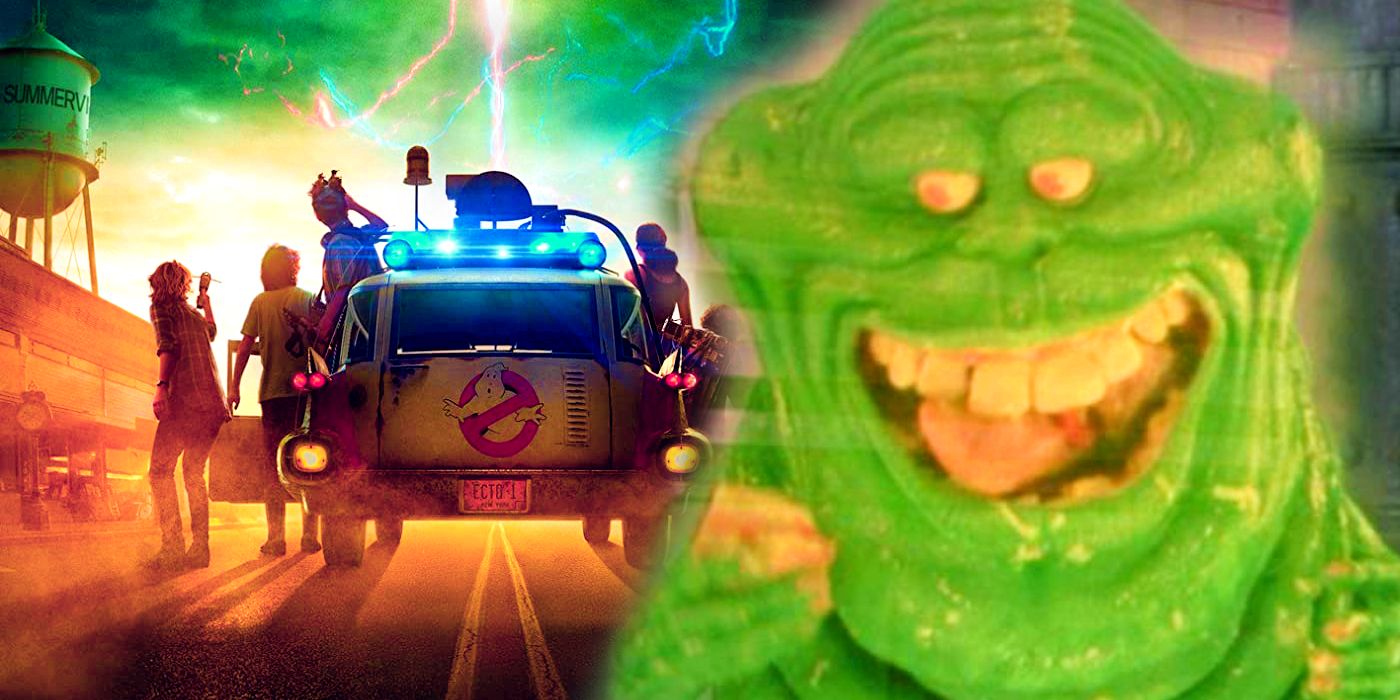
Here's why it's for the best that Slimer didn't appear in Ghostbusters: Afterlife. Crafting a reboot to a dormant or stalled movie franchise is always an odd balancing act, doubly so when it's a sequel to a beloved property made decades prior. The impulse is naturally there to lean hard on the nostalgia factor, spending the runtime indulging in callbacks and fan service designed to make long-time viewers smile with recognition. At the same time, the reboot can't just be that kind of sentimental stuff, or else it has no real reason to exist, necessitating the creation of new characters and plots to latch onto going forward. This tightrope explains why Slimer's reintroduction to the franchise was far from straightforward.
Unlike the 2016 Ghostbusters reboot, Ghostbusters: Afterlife has an explicit link to the original two films in the series. Focusing on Egon Spengler's family, the plot features several recurring elements from previous installments, such as the evil entity Gozer and returning characters such as Bill Murray's Peter Venkman and Sigourney Weaver's Dana Barrett. Given this context, it isn't surprising that the film treads a fine line between welcome nostalgia and drippy sentimentality with no substance.
Judging by Ghostbusters: Afterlife's 95 percent Rotten Tomatoes audience score though, its blend of nostalgia and innovation seems to be working for the masses, and it's no wonder that the reboot's opening weekend ended up better than predicted. Yet, despite all of Ghostbusters: Afterlife's numerous parallel plot points and nods back toward Ivan Reitman's 1984 original - underrated sequel Ghostbusters 2 gets mostly ignored - one character that doesn't get a grand reintroduction is Slimer. As famous as Slimer is though, this move was for the best, as he's kind of worn out of his welcome.

Slimer was arguably best utilized in Ghostbusters 1984, as the troublesome specter that the team tackled at the Sedgewick Hotel. The moment where he "slimes" Peter, which earned the ghost his nickname, is truly iconic. At the same time, a little of Slimer goes a long way, and he was used just the right amount in the original movie. After that, Slimer all-but became the Scrappy-Doo of the Ghostbusters franchise, serving as a kind of mascot, and becoming somewhat insufferable. Slimer in Ghostbusters 2 seems to be there for no real reason other than to annoy people, particularly wannabe Ghostbuster Louis Tully (Rick Moranis, who didn't return for Afterlife). He serves no real function in the story, and his presence just seemed to offer studio Columbia Pictures merchandising opportunities.
The Real Ghostbusters cartoon show, while one of the better vintage examples of a movie franchise transitioning into animation, made Slimer even worse. Over time, Slimer became the equivalent to Poochie from The Simpsons, taking over episodes' stories and even getting his name in the title. That's all added to it not making even a little sense for a ghost to help humans capture other ghosts. Slimer got overexposed, and leaving the rotund entity out of Ghostbusters: Afterlife was a good idea. Co-writer/director Jason Reitman even managed to split the difference by adding in Slimer-esque new ghost Muncher, who only appears briefly, and actually matters to the story, inadvertently helping Phoebe and Podcast retrieve the proton packs from police lock-up. Plus, there's actually a ready-made in-universe explanation for Slimer's absence. He's native to New York City, and would have no reason to be in Summerville, Oklahoma. All of this means that the iconic ghost's non-appearance actually benefits the movie.
from ScreenRant - Feed https://ift.tt/3HRoEgC


0 Comments